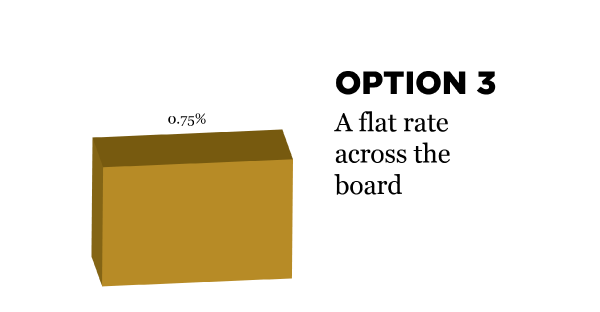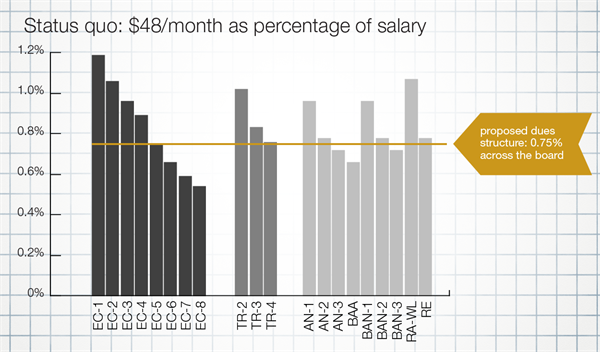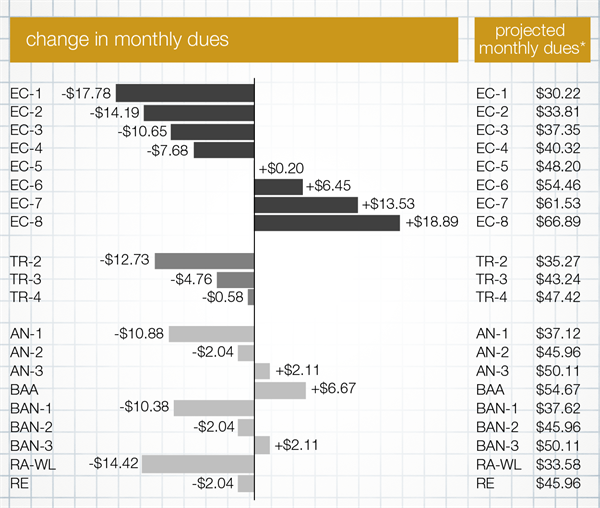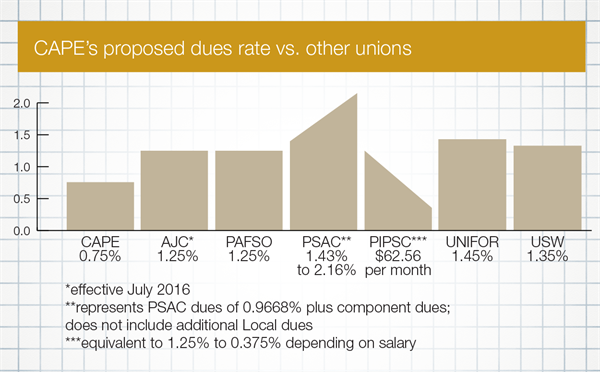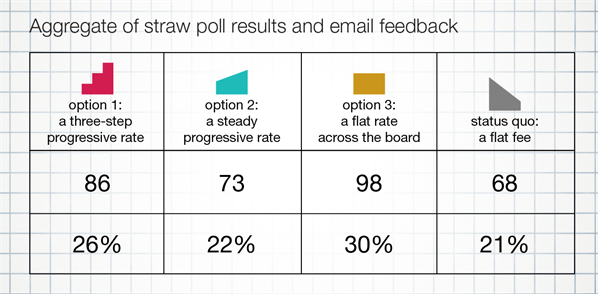This page is from 2016.
We’ve been busy talking with members from coast to coast about our dues structure. The process is now in its final stages.
How did this proposal come about?
As you may recall, a resolution from CAPE’s young members advisory committee asked us to examine the possibility of introducing a progressive dues structure. That resolution was put to a vote of the membership back in November and passed by an 18 point margin. The finance committee was then tasked with coming up with three options, which were presented to the membership last February. The three options were discussed and debated during a special general meeting as well as in local annual general meetings across the country from February through May. These discussions and straw polls helped steer the National Executive Committee in choosing a single option – option 3, a flat rate of 0.75% across the board – for the members to vote on.
What’s next? When do we decide?
On June 15, members will receive an electronic ballot containing three budget-related questions. For the one pertaining to the progressive dues structure, members will be presented with two options: to adopt the proposed progressive dues structure or stick with the status quo.
Why should we adopt a progressive dues structure?
Currently, all CAPE members pay $48 a month, regardless of their income. This means entry-level employees pay a far greater proportion of their income in dues than higher-ups.
As you can see, the burden falls on employees in the lower salary levels; we think that a progressive dues structure would make the union fairer for everyone.
Is this a dues increase?
Some members would see their dues increase while others would see theirs decrease. The aim is to make the system fairer for everyone as a proportion of income. This proposal is simply a revenue-neutral change in our dues structure at the point in time when it is established. This being said, it’s true that over time, the value of monthly dues will likely increase in lockstep with the salary increases that members receive as a result of collective bargaining. If CAPE negotiates a 2% salary increase, this will mean a 2% increase in members’ dues. Although some may argue that it removes the capacity for the membership to be consulted regularly on dues increases, it does provide some level of financial sustainability to the Association, whose expenditures also increase (due to inflation, staff salary increases, etc.). To be clear, CAPE would continue to hold annual membership budget meetings to consult the membership on budget matters.
*Under a flat-rate structure, your dues would always be calculated based on your level's first increment. The projected monthly dues are calculated according to the first increment of the current levels as per rates of pay at the end of the last collective agreement. Once the proposal is implemented, if approved, we will factor in any salary increase that has been negotiated with the employer at that point in time.
How does this compare to other unions?
Many other unions, both in the public and private sectors, have progressive dues structures; each employee pays the same proportion of their salary. Given their complex structure, members of the Public Service Alliance of Canada pay varying rates depending on which component and Local they belong to. By contrast, the Professional Institute of the Public Service of Canada has a flat-fee system similar to CAPE’s current dues structure.
Straw poll results across the country
Over the last few months, we’ve held discussions with members about the progressive dues structure. Like at our special general meeting, straw polls were held at local annual general meetings across the country. We also took into account feedback we received via email. The following shows how our members voted; this information helped the National Executive Committee arrive to a single option to put to the entire membership for a final vote.
More info?
Breakdown of each option by classification and level (PDF)
Frequently asked questions (updated!)
Archived content
Are you looking for some of the earlier material we created on this topic? Click here.
Stay in touch!
We’re your union; we work for you. Follow us on Facebook and Twitter and get up-to-the-minute news about the events and decisions that directly affect your career and working conditions.



